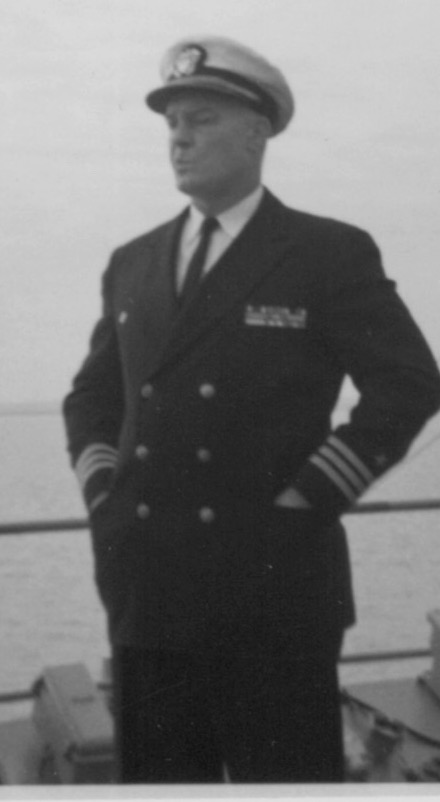This was supposed to be a copy of one of my Lebanon Democrat columns i wrote about my father, whose 109th birthday was yesterday. But my technically-challenged war with computer searches left me bereft, unable to find that column. So i have reinvented that experience below:
Pearl Harbor, Oahu, Hawaii, August, 1975 — It had been the busiest and most rewarding (and unexpected) deployment of my Navy career. It ended with one of the most satisfying and father-connecting moments in our lives.
James Rye Jewell, Sr., lifetime Lebanon, Tennessee resident and master mechanic who had spent his only two years living out of his small country town in the Seabees in the South Pacific cauldron of World War II, arrived a day earlier and took a helicopter tour of the island. The next day, USS Anchorage (LSD 36), with the sea detail officer of the deck and conning officer being James Rye Jewell, Jr., passed through Mamala Bay into the channel and moored pier side at the Naval Station at Pearl Harbor. Unlike most of my stops in Pearl going and coming from a WESTPAC deployment, it was a short stay. About a dozen or so of male relatives and friends, including my father, came onboard for the “Tiger Cruise” back to San Diego.
A “Tiger Cruise,” in my opinion, was a brilliant PR move by the Navy. When the opportunity arose in a non-combat possible time at sea, sailors and officers were allowed to sponsor a relative or friend to join them for a short time at sea. i believe this program still exists.
Our “Tiger Cruise” was the last leg of a seven-month deployment. The tigers were checked in, taken to their berthing and unpacked. It was late afternoon when my father joined me on the bridge to get underway. He stood by my side as i walked the ship from the pier turned it and maneuvered out the channel and turned east north east on a great circle route to the Southwest corner. When we cleared the sea buoy, sea detail was secured and he and i went below. i showed him my stateroom. He went to a meeting for the Tigers, i did a bit of paper work and we met in the wardroom for the evening mess. Afterwards, he walked about the ship and i did a bit more work in my office until the evening watch (2000-2400) as OOD. He joined me.
Daddy spent almost two hours with me. The squadron was returning together but it was almost independent steaming. i gave the conn to my Junior Officer of the Deck (JOOD) soon after relieving the watch. Daddy and i walked out to the starboard bridge wing, watched the other ships while i explained formation steaming. We looked at the heavens and i explained celestial navigation and some adventures we had experienced on the deployment.
Then, Daddy asked me how my sailors, the crew in deck department felt about the cruise.
Now, my father was raised a Presbyterian and became a Methodist when he married a woman whose grandfather had been a circuit rider and became a bishop in the Methodist church. My father’s mother had given him, and consequently me and my neice, Kate Jewell, the middle name of “Rye.” This was in honor of Charles Thomas Rye who was running and subsequently won the governor of Tennessee election in 1915 running as an ardent prohibitionist. Other than a decanter of whiskey to flavor the women’s boiled custard after holiday meals, there was no alcohol in our house.
i told him the sailors were okay with the deployment, but were very unhappy we had spent very little time in liberty and maintenance period at the Subic Bay US Naval base in the Philippines.
When he asked why they were unhappy with the amount of time in Subic, i told him why. Since 1946, the United States Navy had a presence there, and it became the major US base in the South Pacific. the town of Olangapo across the bridge from the base over “shit river” had been built for Filipinos who worked on the base. It had become the closest resemblance to Fiddlers’ Green in perhaps the world. Sailors went on liberty to chase women. Bars, night clubs, and casinos were the primary businesses and sailors found prostitutes, wild women, San Miguel beer, were available for cheap. Fights, street food that could wipe out your innards were available 24/7. The sailors and officers alike loved it. Most of the married ones considered themselves geographic bachelors.
Daddy was taken aback, amazed this was such an desired place for sailors. He wasn’t ready to accept it. We talked some more until he retired around 2000.
The ship conducted tours and activities for the Tigers, and he spent a large amount of the five day transit with me while i stood watch and did my work. When he wasn’t with me or occupied by the scheduled events, he went, mostly to areas under my supervision and talked to sailors. He spent quite a bit of time talking to my sailors.
When sea detail was set as we approached our return to San Diego, he again joined me on the bridge. After sea detail had been set, there was still a lull in my duties before we reached the sea buoy marking the entry into the channel. We went out on the port bridge wing and admired Point Loma. Daddy looked at me and said still with amazement, “Son, you are right. I’m not sure i will ever understand why?”
He was an incredible man, but he wasn’t a sailor.
